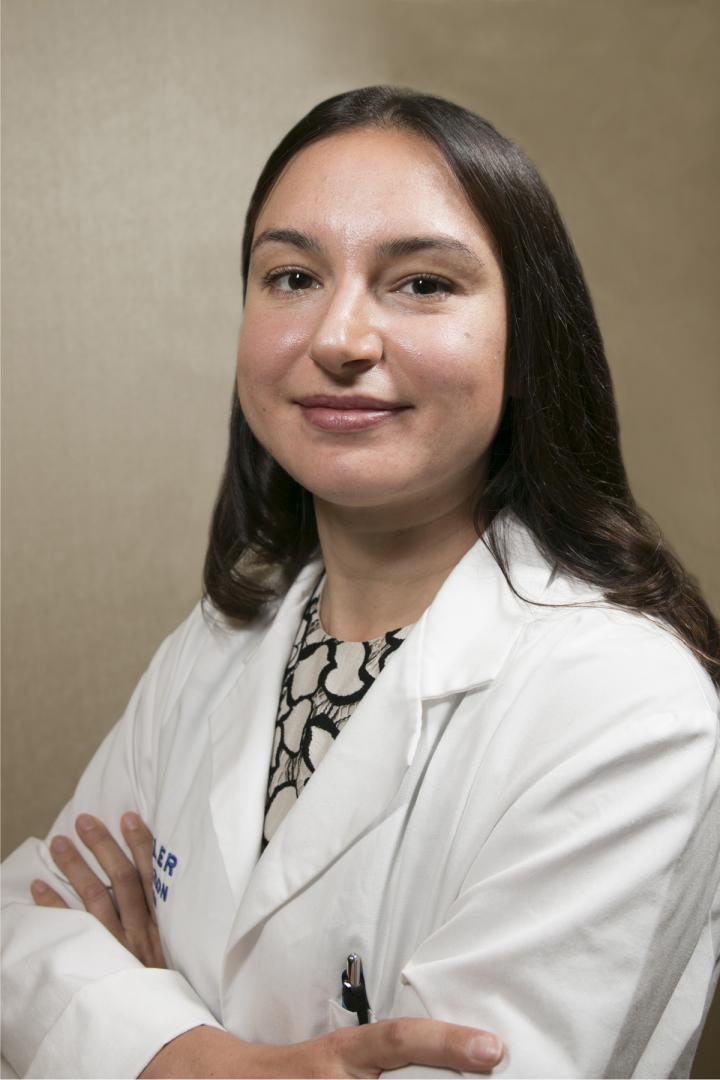New Jersey researchers find early reperfusion of left reading network predicts reading ability in people recovering from left-sided stroke

Credit: Kessler Foundation/Jody Banks
East Hanover, NJ. October 1, 2019. A team of New Jersey stroke researchers has linked recovery of reading and language competence with cerebral blood flow in the left reading network. Their findings may contribute to new approaches to identifying and treating reading deficits after stroke. The open access article, “Cerebral perfusion of the left reading network predicts recovery of reading in subacute to chronic stroke” (doi: https:/
Despite the fundamental role of reading ability in everyday living, little research has been conducted on patterns of reading recovery after stroke, or the development of interventions to improve reading outcomes. In this study of left-brain stroke, a team of New Jersey scientists examined patterns of cerebral perfusion bilaterally, including left and right networks of brain areas important for healthy reading, the area surrounding the stroke lesion, and the corresponding contralateral area.
They enrolled 31 participants during inpatient rehabilitation, within 5 weeks of left-sided stroke. All underwent functional magnetic resonance imaging, psychometric testing, neurological examination and tests for phonological, orthographic and semantic impairments. Fifteen participants had follow-up studies at 3 months post stroke. Analysis of data from the subacute and chronic phases showed that recovery of reading and language competence correlated with increases in cerebral blood flow in the left reading network.
“Our findings support the utility of cerebral perfusion as a biomarker for recovery after stroke,” said Dr. Boukrina, research scientist at the Center for Stroke Rehabilitation Research at Kessler Foundation, “and indicate that early reperfusion of the left reading network is essential to reading performance. We also found that increased perfusion of the right reading network correlated with worse reading performance, which challenges the belief that this increased activity is a necessary transition in the recovery process.”
The team plans future studies of larger populations, with inclusion of additional time points in order to better define the trajectory of recovery after stroke. “Reading deficits hinder the ability to participate fully in rehabilitation, to return to work, and function effectively at home and in the community,” Dr. Boukrina remarked. “Pursuing this avenue of research will help us discover ways to restore function and improve outcomes for individuals recovering from left-brain stroke.”
###
This study was supported by grants from the National Institute for Child Health & Human Development (R00-HD065839 and R21-HD095488), and the Mabel H. Flory Foundation.
Learn about ongoing stroke research at Kessler Foundation at:
https:/
Interested in more information? Email our recruitment specialist at [email protected]
About Kessler Foundation
Kessler Foundation, a major nonprofit organization in the field of disability, is a global leader in rehabilitation research that seeks to improve cognition, mobility, and long-term outcomes–including employment–for people with neurological disabilities caused by diseases and injuries of the brain and spinal cord. Kessler Foundation leads the nation in funding innovative programs that expand employment opportunities for people with disabilities.
For more information, visit KesslerFoundation.org.
Facebook |http://www.
Twitter | http://twitter.
Instagram | https:/
YouTube | http://www.
iTunes & SoundCloud | http://www.
Contacts:
Carolann Murphy, PA
Senior Staff Writer
973.324.8382
[email protected]
Rob Gerth
Director, Communications
973.323.3675
[email protected]
Media Contact
Carolann Murphy
[email protected]
Related Journal Article
http://dx.




